MADRID – Some birds arrive in Spain in large flocks, others alone and many are acquaintances, but all use the Spanish wetlands as a winter refuge. For bird watchers, seeing certain species every year is spectacular.
Spain is a well-known destination for ornithological tourism for a reason. Extremadura in particular is known for the wetlands in which it is teeming with special species of aquatic birds during certain periods.
Every winter, “about 1.7 million water birds” arrive in Spain. There have also been years “with more than 2 million hibernators,” Roberto González, head of the SEO/BirdLife Water program, told Efe news agency on the occasion of World Wetlands Day on Feb. 2. Those hibernators depend on the wetlands on the Iberian Peninsula to survive.
González lists six species that can be seen every year in Spain:
Spoonbill – Platalea leucorodia
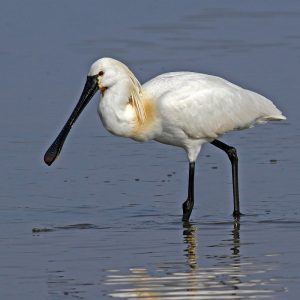
spoonbill
This curious heron with a spade-shaped bill comes from the Netherlands. The bird migrates to the humid areas of the African coast in winter. Along the way, the spoonbill uses the Spanish wetlands, mainly in the Doñana National Park, to rest and breed. No less than 90% of the breeding population is concentrated there.
“The spoonbill is a jewel of Iberian ornithology,” says González, because “our wetlands are fundamental to the European population”. The expert underlines that “if the wetlands did not exist, the species would disappear”.
Crane – Grus grus
González points out that 80% of cranes from Northern Europe use Extremadura to hibernate. Here, these elegant birds eat, among other things, the acorns of the ‘Dehesa’, the same which Iberian pigs are fond of, and use the nearby wetlands to survive.
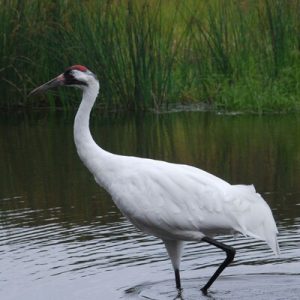
crane
The Aragonese lagoon of Gallocanta is also of fundamental importance for this species, as “there have been days with 120,000 specimens”. González points out in this regard that “we must pay attention to the sky of Madrid” because a large part of these cranes on their way to Extremadura cross the sky of the capital in geometric squads.
Lesser Black-backed Gull – Larus fuscus
“Speaking of Madrid”, González continues, “this city is an important area for seagulls, although it has no beach”. Large flocks of seagulls spend the day feeding in the dumps in the south of the commune and fly to the reservoirs in the mountains every afternoon.
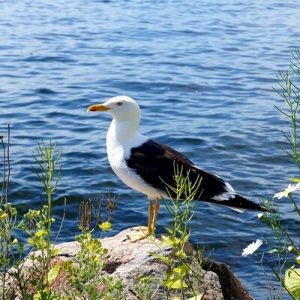
lesser black-backed gull
According to González, “more than 20,000 specimens hibernate in the Santillana Reservoir”. That is the limit stated by the RAMSAR convention* to include a wetland on the list. “For this reason alone, this reservoir is valued as a RAMSAR wetland”.
Bittern – Botaurus stellaris
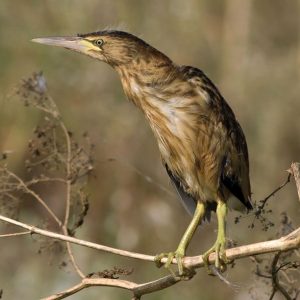
bittern
The bittern is not among the classic wintering birds. González explains “this elusive jewel of Iberian ornithology”, in terms of its breeding population, is cataloged in the red book “as critically endangered”. It is a heron-like bird, also called a reed heron,
“It is a species that goes very unnoticed because it is difficult to locate because of its camouflage. They always hide in the reeds”. Its singing in the mating season is comparable to a serious wind instrument, “like a tuba” or perhaps “with the bellowing of a bull”, and from there it gets its Spanish name ‘avetoro’ (bull bird).
Osprey – Pandion haliaetus
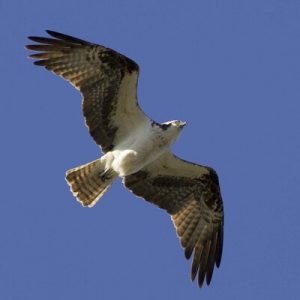
osprey
The Osprey is a classic bird of prey with “re-introduction populations in the Odiel, Urdaibai, and Santander wetlands”. The bird, as the name suggests, “feeds on fish”. Ospreys dive into the water like a live projectile and fly with their prey in their talons. They do so with astonishing power, despite them and their prey being completely wet.
Snowy Owl – Bubo scandiacus
The recent sighting of several white owls in wetlands along the Cantabrian coast was an ornithological event. It happened in the Santoña Marshes. This snow-white owl is “not a classic migratory bird, but has made a leap from the migration routes in America to the Europe-Africa routes”. González describes this phenomenon as “assisted migration”.
These owls live in northern Alaska, Canada, and the US. Experts believe they have arrived on a merchant ship on the Spanish coast because “a snowy owl can’t fly across the Atlantic.”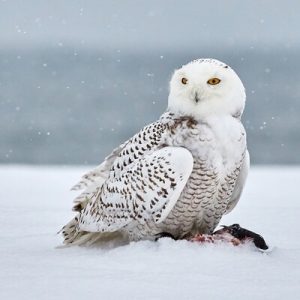
*RAMSAR Convention is an international agreement on wetlands (wetlands) of international significance, in particular as a habitat for waterfowl.


